In Photos: Jaw-Dropping Images Reveal Science Is Amazing
Science speaks
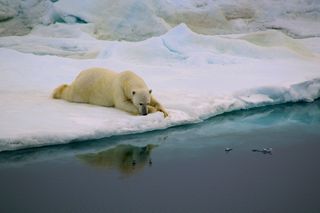
Photos are said to be worth "a thousand words." And that's what the Royal Society looks for when judging images for their Publishing Photography Competition, which "celebrates the power of photography to communicate science and the role great images play in making science accessible to a wide audience." The judges received more than 1,100 entries for the 2017 competition, with winners' shots ranging from a close-up of a tardigrade embryo (showing the water bear baby's every nook and cranny), to an aerial of Antarctic "ice cubes," to a pensive polar bear. Here's a look at the award-winning photos.
Icy sugar cubes

Photographer Peter Convey took the overall winner as well as the winner in the Earth Science and Climatology category with this image called "Icy Sugar Cubes."
Using a Pentax ME Super camera and 70-300 mm zoom, Convey flew over the southern Antarctic Peninsula capturing unusual bi-directional crevassing on an ice sheet. A Twin Otter airplane displays the scale of the fissures.
Bow first

An image of the Russian research vessel, the Akademik Tryoshnikov, sitting at the snout of the Mertz Glacier in Eastern Antarctica won the photographer Giuseppe Suaria runner-up in the Earth Science and Climatology category.
Moments after the photo was snapped, a remotely operated underwater vehicle named ROPOS was deployed to examine the melting ice sheet.
Olive oil drop family
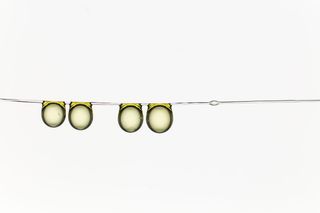
Snagging the winning position in the Micro-Imaging category, this image of tiny olive oil droplets was snapped with a Nikon D300 camera and Phlox backlight at 10,000 lux.
Photographer Hervé Elettro found inspiration from the Nephilia Madagascariensis spider which uses micro-glue droplets to trap its prey.
Water bear embryo

Photographer Vladimir Gross' image of a 50-hour-old embryo of a Hypsibius dijardini, a species of tardigrade, snagged runner-up in the Micro-Imaging category of the 2017 Royal Society Publishing Photography Competition.
Waiting in the shallows
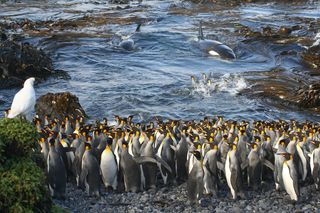
King penguins busy themselves with preening at the water's edge on Marion Island, in the Indian Ocean and part of South Africa. In the bay, a group of killer whales surface, startling a group of penguins in the water. And, a Lesser Sheathbill watches the entire scene perched on a rock. This beautiful and busy photo garnered photographer Nico de Bruyn winner in the Ecology and Environmental Science category.
Invincible ants
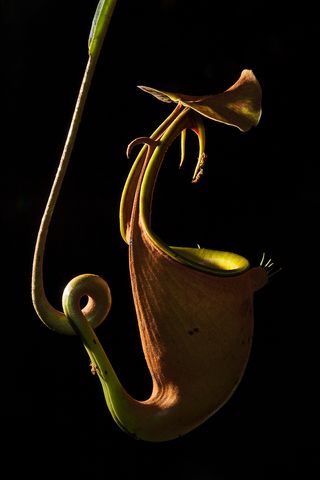
While the Nepenthes bicalcarata, a species of carnivorous pitcher plant, presents certain death to many insects, the Camponotus schmitzii ants are impervious to its traps. As seen is this image, which won photographer Thomas Endelin runner-up in the Ecology and Environmental Science category, the specialized ants live in the vines of the plant and climb in and out of the pitcher with no problem.
Respiro

Photographer Antonia Doncila, of Edinburgh University, snapped this image while crossing the Fram Strait, between Greenland and Svalbard in the Arctic Ocean. A polar bear gazes into the water from a portion of fast ice. Many polar bears are not so lucky and die in the open ocean while swimming for sea-ice. The image, taken with a Canon EOS 5D Mark II + Tamron telephoto lens, was the winner in the Behavior category.
Breeding
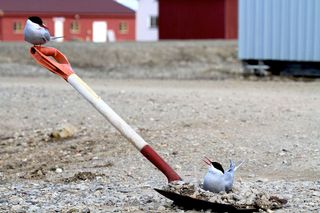
Taking runner-up in the Behavior category of the 2017 Royal Society Publishing Photography competition, this unique image of two Arctic terns "communicating" on their cleverly chosen nest: an abandoned shovel. Photographer David Costantini of the Muséum National d'Histoire Naturelle in Paris, France, captured the image in Svalbard.
Lunar spotlight
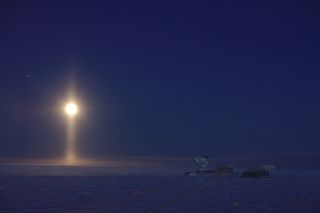
A rare optical phenomenon created by ice crystals in the atmosphere brought photographer Daniel Michalik, of the School of Biosciences, University of Kent, the winning image in the Astronomy category. The image was captured with a single long exposure. The illusion is created more often in the geographic South Pole than other non-polar regions.
The rainy season
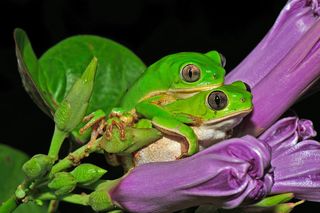
In the Brazilian semi-arid desert of Caatinga, the first summer rains birth a spectacular green world that's lush with flora and alive with fauna. The Phyllomedusa nordestina frog dons a new bright green garment with which to woo potential mates.
The inspiring image garnered photographer Carlos Jared of Instituto Butantan, Cell Biology Laboratory, Sao Paulo, Brazil, honorable mention in the Ecology and Environmental Science category of the contest.
Sign up for the Live Science daily newsletter now
Get the world’s most fascinating discoveries delivered straight to your inbox.
